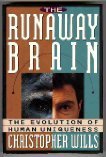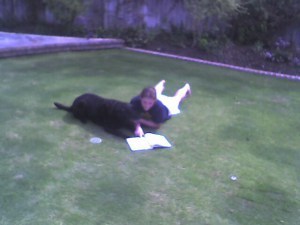Jacqui Murray's Blog, page 159
October 21, 2013
10 Tips from David Gerrold
 I didn’t know who David Gerrold was, but I sure as heck knew what he wrote. David Gerrold wrote over 50 books, several hundred articles and columns, and over a dozen television episodes for various Star Trek series, but the only one that matters is the amazing Trouble With Tribbles. He wrote that while still in college, which is almost sad because–how does a life get better? Sure, War and Peace or Da Vinci Code, but to a Trekkie, those aren’t even on the same planet.
I didn’t know who David Gerrold was, but I sure as heck knew what he wrote. David Gerrold wrote over 50 books, several hundred articles and columns, and over a dozen television episodes for various Star Trek series, but the only one that matters is the amazing Trouble With Tribbles. He wrote that while still in college, which is almost sad because–how does a life get better? Sure, War and Peace or Da Vinci Code, but to a Trekkie, those aren’t even on the same planet.
I got to listen to David Gerrold at a digital publishing conference I attended a few weeks ago. He’s clever, humorous, quick-thinking, a bit edgy, and an excellent writer. Here are his tips on how to write:
A thought goes into the tunnel and never comes out.
Every blank page is a threat.
I had a block once. It was the worst twenty minutes of my life.
Typewriter–keyboard and a printer with no computer between them.
A mans speech should exceed his task or what’s a metaphor.
Passion is the engine that drives your writing.. What are you pissed off about?
Whatever walks past your keyboard, grab it and put it in the story.
TV tells us everything will be alright by that last commercial.
Find the simplest way to say something. Don’t try to be pretty.
Use adjectives and adverbs as though they are costing you money.
If you write yourself into a corner, write yourself out of it. Find the most obvious way, then do the opposite.
You don’t finish your work; you abandon it.
Don’t do back story unless it moves the story forward.
Dying young and leaving a good-looking corpse are no longer on my bucket list.
Let me interrupt myself.
The last ten pages rule: This is the most important part of the book because it is what the audience is left with. The last ten pages must be brilliant.
90% of what a writer does is research. The other ten percent is plotting revenge.
When asked, ‘How many pieces are you working on at once?’ I answer, ‘All of them.’
That’s enough for now. I see a few hands saying they have to go. We’ll talk more in the comments.
More books about digital publishing:
Jacqui Murray is the author of the popular Building a Midshipman , the story of her daughter’s journey from high school to United States Naval Academy. She is webmaster for six blogs, an Amazon Vine Voice book reviewer, a columnist for Examiner.com and TeachHUB, Editorial Review Board member for Journal for Computing Teachers, and a monthly contributor to Today’s Author. In her free time, she is editor of a K-8 technology curriculum and technology training books for how to integrate technology in education. Currently, she’s editing a thriller that should be out to publishers next summer. Contact Jacqui at her writing office or her tech lab, Ask a Tech Teacher.
Filed under: authors, writers tips Tagged: david gerrold, star trek, tribbles, writers tips


October 18, 2013
Book Review: Origin of Humankind
My rating: 5 of 5 stars
If you’re interested in man’s roots, there are several authors you must read:
Birute Galdikas
Dian Fosse
Donald Johanson
GHR Von Koenigsman
Glen Isaacs
Jared Diamond
Ian Tattersell
Lev Vygotsky
Margaret Meade
Noam Chomsky
Richard Leakey
Shawna Vogel
Sue Savage-Rumsbaugh
…but the man who started it all with his Margaret Meade-like charisma and down-to-earth writing style was Richard Leakey. His work in Olduvai Gorge caught the publics imagination like nothing before.
If you want to meet Richard Leakey, you must read his short little summative book, The Origin of Humankind (Perseus Books 1984). In this manuscript, he explains in plain English so all of us non-doctoral candidates can understand what he has concluded after a lifetime of research it is that differentiates you and I from other animals. Much has been made of the human-ness of our close cousins, the Great Apes. Between chimpanzees, gorillas, bonobos, even orangutans, we see a lot of ourselves in their actions, decisions, parenting, culture. These blur the line between what really makes us human and them not. Heck, genetically, there is only 1.2% difference in our DNA–how different could we really be?
There have been tests to answer that very question. Those tests are what drove Jane Goodall into the field to see how exactly chimps were animals while she was human. Every test she ran them through, they passed. What happened when she returned from the field to show this to her scientific colleagues? They changed the tests–moved the goal posts.
At one time, the hurdle was that the animal species must be able to use tools. That fell to Goodall’s first fieldwork research in Tanzania. Then it was they must be able to use tools to make tools. That fell, too–I believe again to Goodall’s research. Then it was they must be able to identify themselves (Sue Savage-Rumbaugh crushed that one?), problem solve, visual thinking–what about symbolic thinking? I come away shaking my head, trying to clear out the multiplying requirements.If we are all part of the same human bush, I want to know. You should want to know, too.
Richard Leakey tackled that complicated problem in this 170-page book. He starts by discussing human evolution, how we differ from other primates in unique ways. He then discusses several areas that anthropologists have a difficult time finding in other species–art, language, ethical judgments, and mental skills. Yes, anthropologists do find them in other species, but not consistently and not the way man uses these. You’ll find the discussion fascinating.
He does skip one trait I think has never been refuted: Man is the only species I know that chooses to think rather than sleep or eat. Most animals spend their days hunting or resting up to hunt. The great apes throw play into the mix, but are there any species that choose to think about their future, problems, create solutions, explore for the sake of adventure in the way we do?
You can read this book in a weekend. It’ll change your thinking for a lifetime. Don’t miss it.
More books about man:
Book Review: In the Shadow Of Man
Book Review: The Tree Where Man Was Born
Book Thoughts: Worlds of a Maasai Warrior
Jacqui Murray is the author of the popular Building a Midshipman , the story of her daughter’s journey from high school to United States Naval Academy. She is webmaster for six blogs, an Amazon Vine Voice book reviewer, a columnist for Examiner.com and TeachHUB, Editorial Review Board member for Journal for Computing Teachers, Cisco guest blog, and a monthly contributor to Today’s Author. In her free time, she is editor of a K-8 technology curriculum and technology training books for how to integrate technology in education. Currently, she’s editing a thriller that should be out to publishers next summer. Contact Jacqui at her writing office or her tech lab, Ask a Tech Teacher.
Filed under: book reviews Tagged: book review, early man


October 17, 2013
How to Describe Dogs
I love dogs so every time there’s a dog in a story, I take notice. I like to see how authors describe their actions, emotions, everything. Here are some of my favorites–as usual, these are from real stories so don’t copy them. Just use them for
inspiration:
Greeting
The dog snorted happily and bounded forward
Tail-wagging Labrador bravado
Feet like saucepans, took a cheerful rush at the American, leapt up and planted his muddy paws
When a dog approaches a strange dog or man in a savage or hostile frame of mind he walks upright and stiffly; his head slightly raised; the tail is held erect, and rigid; the hairs bristle, especially along the neck and back; the pricked ears are directed forwards, and the eyes have a fixed stare
Came in the room, sat quietly until I stopped what I was doing and said hi, then he turned and left.
Exploring
Max heard Susan moving around in the kitchen and hustled out of the bathroom to investigate. You could never be certain someone wouldn’t give you a second breakfast.
The dog got worried, crawled up on the bed, raced around chasing a ball, finally chased it out of the room. From her roommates room, she heard her barking, growling at the dog, slapping and playing, tossing the ball and the dog returned. She wondered who thought who was whose pack.
happy woofing sounds of a dog discovering hidden treasures
Abby greeted me with an exuberant lunge and when I went into the hall, I squatted and endured her exuberance until it abated
I heard Spot return to the closed door and snuffle a little, and sigh and lie down against it. She seemed to have figure out that there were times when we had to be alone.
Sylvester forged ahead again, keeping the leash taut.
Angry
flopped onto the floor in full doggy snit
Dogs after voiding their excrement often make with all four feet a few scratches backwards, even on a bare stone pavement, Wolves and jackals behave in the same manner, yet, as I am assured by the keepers, neither wolves, jackals, nor foxes, when they have the means of doing so, ever cover up their excrement, any more than do dogs. All these animals, however, bury superfluous food.
Dogs and jackals take much pleasure in rolling and rubbing their necks and backs on carrion. The odor seems delightful to them. wolves don’t roll in the odor
Nothing but bone and bark
Miscellaneous
It’s take your dog to work day
the one which first sees the other, lowers its bead, crouches a little, or even lies down; takes the proper attitude for concealing himself
trotting gravely with high steps, head much raised, moderately erected ears, and tail carried aloft but not stiffly.
Dog crawling up the back of the chair
Paying Attention
With pricked ears, he watched for a moment and then yawned
Roaming the backyard, engaged in dog intrigue
Defending
Dog’s eyes wide, ears flat, a vibrating growl deep in his chest
As he prepares to spring with a savage growl, canine teeth are uncovered, and the ears pressed close backwards on the head
dogs when intently watching and slowly approaching prey, keep one of their fore-legs doubled up for a long time, ready for the next cautious step. they behave in exactly the same manner whenever their attention is aroused. I have seen a dog at the foot of a high wall, listening attentively to a sound on the opposite side, with one leg doubled up;
dogs wandered off to rest their noses in their paws
roughed them up the way Labs expect to be treated
Playing
Ran to the couch and got a pillow and shook it violently until it was dead, and came back to show us.
she lay down with a headache. The dog got worried, crawled up on the bed, raced around chasing a ball, finally chased it out of the room. From her roommates room, she heard her barking, growling at the dog, slapping and playing, tossing the ball and the dog returned. She wondered who thought who was whose pack.
Dogs scratch themselves with one of their hind-feet; and when their backs are rubbed, they rapidly scratch the air or the ground in a useless and ludicrous manner. by licking the air as if it were a hand.
young dogs in play growling and biting each other’s faces and legs
One of them ran around for a while with a pine cone in its mouth
Took a silk cushion from the chair and carried it around wagging her tail.
Exulting in whatever it is that dogs exult in
a real dog’s dog
doggy yo-yo
Dogess
Sleeping
Shifted in his sleep and licked his muzzle with one slow sweep of his tongue
I think she’d bark and snuffle and paw at us
Casey stood up, turned around three times, and settled back down with a large sigh. Clearly it was enough chitchat for the night.
Stoney was draped diagonally across her feet
the dog slept with one eye open all night because he didn’t trust her to feed him in the morning
An aging cocker spaniel came around the corner and gave me a token bark before she sat with her tongue out, waiting for me to pat her.
Sandy loped around my apartment, alert for something to chew
April picked up her squeaky toy and shook it and looked at me, and made a decision, and jumped up on the couch with her squeaky toy and lay down with it underneath her.
The dog curled into a wet lump and lay shivering on the ground
Dog was doing impression of a corpse
He stretched, shook himself and circled several times before dropping to the ground
paws up, aerial
The dog was sprawled across her lap, his sides rising and falling, his nose mashed against the ground in a most uncomfortable-looking manner. Dogs were funny. They could sleep in peculiar positions.
She shifted on to her back with her feet up and her head lolling over the edge of the couch
Eating
Dan got off the bed and went purposefully to the kitchen where I could hear her lapping water from the dish.
He gave a dog biscuit to Dog. She ate the biscuit and resumed her scone watch.
The dogs finished eating and settled in on the sofa, overlapping each other in ways that no human would find comfortable.
shifting his attention from Mary Lou to me. Food can come from any direction
Ben was an efficient and focused eater. By 4:13 her dish was empty and she topped it off with a long lap at her water dish.

Explored where the kids had been sitting in case they had left edible refuse
Swam one more circle and gave up and came back into shore and began rummaging in the waterweeds again
Begging
Pacey coiled in and around our feet, ever hopeful
Ned hopped up onto the picnic table and stared at my sandwich from very close range. I broke off a piece and gave it to her. It disappeared at once, and she resumed the stare.
wag its tale and watch with hopeful eyes
Vick rested her chin on my knee and rolled her eyes up to look at me. I gave her the remainder of my sandwich.
dog watched him, ears up, head slightly cocked.
More descriptors:
Words Lie, Body Language Doesn’t
How to Describe a Character’s Neighborhood
Jacqui Murray is the author of the popular Building a Midshipman , the story of her daughter’s journey from high school to United States Naval Academy. She is webmaster for six blogs, an Amazon Vine Voice book reviewer, a columnist for Examiner.com and TeachHUB, Editorial Review Board member for Journal for Computing Teachers, Cisco guest blog, and a monthly contributor to Today’s Author. In her free time, she is editor of a K-8 technology curriculum and technology training books for how to integrate technology in education. Currently, she’s editing a thriller that should be out to publishers next summer. Contact Jacqui at her writing office or her tech lab, Ask a Tech Teacher.
Filed under: descriptors, writers resources Tagged: animals, characteristics, descriptors, dogs


October 16, 2013
Check Out My Today’s Author Post
I invite you to drop by my article over at Today’s Author, 23 Reasons I’m NOT Doing NaNoWriMo. If you can’t make it, no worries. I’ll post here soon.

Jacqui Murray is the author of the popular Building a Midshipman , the story of her daughter’s journey from high school to United States Naval Academy. She is webmaster for six blogs, CSG Master Teacher, Amazon Vine Voice book reviewer, a columnist for Examiner.com and TeachHUB, Editorial Review Board member for Journal for Computing Teachers, Cisco guest blog, IMS tech expert, and a monthly contributor to Today’s Author. In her free time, s he is the editor of a K-8 technology curriculum, K-8 keyboard curriculum, K-8 Digital Citizenship curriculum, and creator of technology training books for how to integrate technology in education. Currently, she’s editing a thriller that should be out to publishers next summer. Contact Jacqui at her writing office or her tech lab, Ask a Tech Teacher.
Filed under: Guest bloggers Tagged: guest post, writing


October 14, 2013
Writers Tip #59: Work in Clay, Not Marble
 When you read your story, does it sound off, maybe you can’t quite put your finger on it, but you know you’ve done something wrong? Sometimes–maybe even lots of times–there are simple fixes. These writer’s tips will come at you once a week, giving you plenty of time to go through your story and make the adjustments.
When you read your story, does it sound off, maybe you can’t quite put your finger on it, but you know you’ve done something wrong? Sometimes–maybe even lots of times–there are simple fixes. These writer’s tips will come at you once a week, giving you plenty of time to go through your story and make the adjustments.
Today’s tip comes from Jacques Barzun, an American historian of ideas and culture, author/editor of more than forty books touching on a broad range of subjects including science and medicine:
Convince yourself that you are working in clay not marble, on paper not eternal bronze. Let that first sentence be as stupid as it wishes. No one will rush out and print it as it stands.
I now have permission to make mistakes–spelling/grammar errors, malapropisms I didn’t intend as humor, run-on sentences and truncated ideas. I don’t care. I’m like Pacman with a pen. After I’ve thrown my words onto paper in an effort to be authentic, unique and honest, I can cut, edit, revise or improve to my heart’s content.
What editing can’t fix is that stilted sound that comes of conscripting a scene, forcing it into a framework it was never intended to fit. All I can do then is throw it out and start over.
This time, I’ll get every emotion, passion, sensory overload down before I start fixing things.
To have these tips delivered to your email, click here.
More tips on writing and editing:
Writer’s Tip #57: You are not Superwoman
5 Ways to Write Like Your Hair’s on Fire
Jacqui Murray is the author of the popular Building a Midshipman , the story of her daughter’s journey from high school to United States Naval Academy. She is webmaster for six blogs, an Amazon Vine Voice book reviewer, a columnist for Examiner.com and TeachHUB, Editorial Review Board member for Journal for Computing Teachers, Cisco guest blog, and a monthly contributor to Today’s Author. In her free time, she is editor of a K-8 technology curriculum and technology training books for how to integrate technology in education. Currently, she’s editing a thriller that should be out to publishers next summer. Contact Jacqui at her writing office or her tech lab, Ask a Tech Teacher.
Filed under: editing, writers tips, writing Tagged: drafts, editing, writing


October 11, 2013
Book Review: Locked In
My rating: 4 of 5 stars
Kerry’ Wilkinson’s Locked In (Thomas & Mercer 2013) is a fun read, with an enticing detective character and a good enough though fairly common plot. Brit Detective Sergeant Jessica Daniel tries to track down a killer–which quickly becomes a serial murderer–who leaves no visible evidence of how s/he got into and out of the murder scene. It takes a lot of twists and false starts before Jessica can uncover the truth, which turns out to be too close to home for her health.
The best part of this story is Jessica Daniel. She’s likeable, human, real, what you want a detective to be, with a dash of humor and passion thrown in. She is new to her position and wants desperately to prove she’s up to the job, but runs into endless problems in her effort to do that. Wilkinson has a nice storytelling voice that’s friendly and intimate enough to make readers want to follow along on Jessica’s journey, despite her lack of creativity in detective work. She seems to stumble into results rather than intuit them. You’d never attribute brilliance to her bag of murder-solving tricks, but she has rigor, energy, and commitment to her job, enough that she is able to catch a big clue when it’s lobbed her way.
Be prepared for lots of subplots. Besides the mass murderer, there’s:
a mole in the police station who’s telling police secrets to a reporter
the reporter’s love life–even a few scenes in his Point of view
Jessica’s roommate’s love life which skyrockets
Jessica’s love life–non-existent with one aborted effort to change that
Jessica’s mentor’s police problems
None of these are resolved–just the main plot–so we’re nicely set up for a sequel to what is clearly the start of a series (or if Wilkinson hadn’t planned it that way, he missed a good bet).
Overall, the story drags a bit, with the police a bit dunderheaded (I don’t for the life of me know why they didn’t come up with at least a few ways a murderer could get in and out of a locked room. Their biggest effort was to track down who had keys). Several scenes I found myself wondering why they were even included (unless, of course, its a set-up for a later book in the series). More than once, there was too much retelling of events rather than putting readers in the action.
But, in the end, Jessica is a good enough character to keep my interest. I’d recommend it as an airplane read.
More murder-mystery reviews:
Capitol Murder by Phillip Margolin
Darkness My Old Friend by Lisa Unger
Jacqui Murray is the author of the popular Building a Midshipman , the story of her daughter’s journey from high school to United States Naval Academy. She is webmaster for six blogs, an Amazon Vine Voice book reviewer, a columnist for Examiner.com and TeachHUB, Editorial Review Board member for Journal for Computing Teachers, Cisco guest blog, and a monthly contributor to Today’s Author. In her free time, she is editor of a K-8 technology curriculum and technology training books for how to integrate technology in education. Currently, she’s editing a thriller that should be out to publishers next summer. Contact Jacqui at her writing office or her tech lab, Ask a Tech Teacher.
Filed under: book reviews Tagged: book review, detective


October 9, 2013
5 Ways to Write Like Your Hair’s on Fire
 I’m a very organized person. I like everything in its place, ducks lined up, no chance of interruptions, then I can get into my writing. I couldn’t find that sweet spot until my children had moved out because until that point, I’d drop anything when they needed me. I still do, but as adults, those times are more rare.
I’m a very organized person. I like everything in its place, ducks lined up, no chance of interruptions, then I can get into my writing. I couldn’t find that sweet spot until my children had moved out because until that point, I’d drop anything when they needed me. I still do, but as adults, those times are more rare.
These days, I get a lot of writing done. My office is perfectly arranged. I have two monitors; one shows my writing, one my research. I have four back-up drives automated so I don’t worry about losing work. I have a fan I can turn on if it gets too hot. I have shelves of books right behind my chair–I swivel and I can find the description of Mt. Kilimanjaro I need for an article. To my left is a glass of ice tea, more a crutch than a thirst quencher. I was going to put a baby frig in a corner, but my husband sold it to a neighbor! Now, getting a snack is a mental break. My Labrador Casey regularly visits, or lies outside the door, keeping an eye on me.
What sets my hair on fire is deadlines. My modus operandi is to take on as much as I can until it’s too much, then I scramble to finish it. As a result, I’m always hurrying to finish one writing job so I can get to another. We could psychoanalyze why I do that, but today, I want to share how I manage to accomplish it:
I write everything as though I have a deadline that must be met. Think fast. Organize fast. Get ideas down and edit. Then, move on. I trust my skills. I hope I’m better than my inner muse thinks I am.
I write on a topic I’m passionate about. Nothing like emotion to get the words flowing
I write in my own voice. I don’t try to rephrase things according to rules and regs. My blog readers are used to my writing style–my choice of words. It’s probably at least part of the reason they visit. Ana Hoffman’s Traffic Generation Cafe is a great example of that. Every time I open one of her posts, I feel like we’re huddled over a table, coffee in hand, sharing the secrets of the world like best friends. Why? It’s her voice.
I let my muse speak. I don’t edit her. I don’t second guess her intent.
I trust my gut. Studies show that people who act on their gut are more likely to be right. Why? Because what we call ‘gut’ is our collective experience, skill, and knowledge. Our brain mashes it together for a fast decision when we need one–and that’s our 6th sense or ‘gut’. I trust it. I’ve gained a lot from life experiences. Might as well let them work for me.
That’s it. It works well enough. I’d love to be a better writer, but maybe that’s coming.
More articles about a writer’s life:
What I’m Insecure Writing About
27 More (Writing) Tips From Twitter
Writers Tip #50: No More Casual Writing
___________________________________________________________________________________________________________________________________
Jacqui Murray is the author of the popular Building a Midshipman , the story of her daughter’s journey from high school to United States Naval Academy. She is webmaster for six blogs, an Amazon Vine Voice book reviewer, a columnist for Examiner.com and TeachHUB, Editorial Review Board member for Journal for Computing Teachers, Cisco guest blog, CSG Master teacher, and a monthly contributor to Today’s Author. In her free time, s he is the editor of a K-8 technology curriculum, K-8 keyboard curriculum, K-8 Digital Citizenship curriculum, and creator of technology training books for how to integrate technology in education. Currently, she’s editing a thriller that should be out to publishers next summer.
Filed under: problem-solving, writing Tagged: deadlines, writing


October 7, 2013
Writers Tips #58: Torture Your Protagonist
 When you read your story, does it sound off, maybe you can’t quite put your finger on it, but you know you’ve done something wrong? Sometimes–maybe even lots of times–there are simple fixes. These writer’s tips will come at you once a week, giving you plenty of time to go through your story and make the adjustments.
When you read your story, does it sound off, maybe you can’t quite put your finger on it, but you know you’ve done something wrong? Sometimes–maybe even lots of times–there are simple fixes. These writer’s tips will come at you once a week, giving you plenty of time to go through your story and make the adjustments.
Today’s tip: comes from Janet Fitch. She suggests you…
Torture Your Protagonist
The writer is both a sadist and a masochist. We create people we love, and then we torture them. The more we love them, and the more cleverly we torture them along the lines of their greatest vulnerability and fear, the better the story. Sometimes we try to protect them from getting booboos that are too big. Don’t. This is your protagonist, not your kid.
I wouldn’t use the word ‘torture’, but a protagonist must be thrown into untenable situations. They must lead a life filled with chaos, confusion, and crises or readers will get bored. We don’t want to spend a couple of weeks with our mundane next-door-neighbor who goes to work, spends an hour every evening at the gym, reads the paper on his iPad and goes to bed. We are drawn to drama–water cooler chat and gossip. Who’s life is falling apart? Who’s boyfriend dumped them? Who’s in trouble?
A novel’s protagonist must be multi-dimensional. We must care about their drama (which might not be the case with the object of gossip). We must root for their ability to solve it. We must wince when it gets worse–as it must to keep the story’s engine churning forward.
But, we must see the protagonist as having the ability to solve each problem they are faced with. Readers don’t want the underdog to lose. We like the white knight on the speeding horse who charges to the rescue. It’s even more satisfying if its the mental ability of the protagonist to solve the crisis despite his own personal flaws and foibles.
So, yes, Janet’s right, but torture is only one of many devices available to you the author to make your story gripping.
What’s your favorite plot device?
–Click to have Writer’s Tips delivered to your email box
More articles on characters:
Writers Tip #54: Do You Know Your Characters
My Character is Sick–How to Show (Not Tell) Illness
Writers Tip #53: What Motivates Your Character Provides Conflict
Writers Tip #51: Give Your Characters Their Head
Jacqui Murray is the author of the popular Building a Midshipman , the story of her daughter’s journey from high school to United States Naval Academy. She is webmaster for six blogs, an Amazon Vine Voice book reviewer, a columnist for Examiner.com and TeachHUB, Editorial Review Board member for Journal for Computing Teachers, Cisco guest blog, CSG Master teacher, and a monthly contributor to Today’s Author. In her free time, s he is the editor of a K-8 technology curriculum, K-8 keyboard curriculum, K-8 Digital Citizenship curriculum, and creator of technology training books for how to integrate technology in education. Currently, she’s editing a thriller that should be out to publishers next summer.
Filed under: characters, plot, writers resources, writers tips Tagged: characters, plot, plot devices, writing


October 4, 2013
Book Review: Runaway Brain
 The Runaway Brain: The Evolution of Human Uniqueness
The Runaway Brain: The Evolution of Human Uniqueness
My rating: 5 of 5 stars
In my lifelong effort to understand what makes us human, I long ago arrived at the lynchpin to that discussion: our brain. Even though bipedalism preceded big brains, and we couldn’t be who we are without that upright stance, I believe we would be little more than vertical apes without being followed quickly by an explosion in our brain size. And, I’m not talking about volume–quantity–as much as quality. Neanderthals taught us brain growth must be in the correct part of the brain. Bigger, stronger animals require bigger stronger brains, but that doesn’t mean they are more efficient or effective. Neanderthals had a brain bigger than modern man, but it was used to drive their life style, not their evolution.
It is this topic that Christopher Wills investigates in his wonderful book, The Runaway Brain: The Evolution of Human Uniqueness (Harper Collins 1993). His approach is not so much a simple discussion of our brain’s changes over time as a focus on how those changes turned the genus Homo into the most unique animal on the planet. His writing is fun, easy-to-understand and almost like a thriller as we are forced to turn pages long after we might have put the book down. Why? We must see what happens next. He discusses not only evolution, but brain growth in modern man–how does the brain mature throughout our own lifetime. I learned most of this in my child psychology classes, but reading it through his eyes was so much more fun than the way my professors described it.
The real meat of the book is his discussion of changes in the brain that enabled our evolution to Thinking Man. So much of what we are wouldn’t be possible without drastic changes in the brain’s structure. Mutations, certainly, but we’re thankful for them. Our ability to speak as we do is one. Our interest in art and music–symbolic thinking, where we don’t just say things in a black-and-white sort of way, but use mental pictures. As recently as the early 1900′s, this sort of symbolic thinking allowed primitive tribes to travel their habitat without ever getting lost–even to places they had never before been.
How did we come up with counting? How did we decide to adorn ourselves with paint and jewelry? These would not have occurred without changes in our brain that made these seem normal. Why does man problem-solve? Most other species follow instinct. If there isn’t a solution that’s hard-wired into their genes or they can learn from a parent, it’s out of their reach. Not mankind.
These are all part of the Runaway Brain. Jump in and don’t let go. If you borrow the book from the library, you’ll end up purchasing it because you’ll want to refer to it over and over.
More science book reviews:
Book Review: In the Shadow Of Man
Acheulian Site of Gesher Benot Ya’Aqov, Israel: The Wood Assemblage
Jacqui Murray is the author of the popular Building a Midshipman , the story of her daughter’s journey from high school to United States Naval Academy. She is webmaster for six blogs, an Amazon Vine Voice book reviewer, a columnist for Examiner.com and TeachHUB, Editorial Review Board member for Journal for Computing Teachers, Cisco guest blog, and a monthly contributor to Today’s Author. In her free time, she is editor of a K-8 technology curriculum and technology training books for how to integrate technology in education. Currently, she’s editing a thriller that should be out to publishers next summer. Contact Jacqui at her writing office or her tech lab, Ask a Tech Teacher.
Filed under: Uncategorized


October 2, 2013
What I’m Insecure Writing About
 This post is for Alex Cavanaugh’s Insecure Writers Support Group (click the link for details on what that means and how to join. You will also find a list of bloggers signed up to the challenge that are worth checking out like Kate and Rebecca who inspired me to begin). The first Wednesday of every month, we post our thoughts, fears or words of encouragement for fellow writers.
This post is for Alex Cavanaugh’s Insecure Writers Support Group (click the link for details on what that means and how to join. You will also find a list of bloggers signed up to the challenge that are worth checking out like Kate and Rebecca who inspired me to begin). The first Wednesday of every month, we post our thoughts, fears or words of encouragement for fellow writers.
This month’s insecurity for me: Writing about love, sex, and that sort. I got this idea from reading Kate’s post last month. Which she got from another writer (and that’s how we grow–each inspiring the other). My hand went up as I was reading–me too. I have difficulty writing romance and that’s not good because lots of people read books for a peek at what other people consider ‘love’. In preparation for this article, I researched what is required in a romance novel. Here’s a list of the biggest differences between romance and thriller:
Romance writers have a wonderful, loveable, sympathetic heroine and hero–both. Thrillers usually have one main hero who is tough, stoic, flawed.
Romance main characters are usually beautiful. Thrillers like muscles and rigor–beautiful brains.
Romance plots require that early in the story, something throws the two main characters together. Thriller heroes are more likely thrown into a nest of terrorists.
Romance writers create a sex/love scene if the plot slows down. Thriller writers blow something up.
Romance plots revolve around people who fall in love then struggle to make it work. Thriller plots have people trying to kill each other, prevent the world from ending, with a conspiracy around every corner.
Romance plots include what they call a ‘cute meet’ where hero and heroine meet. Thriller plots–boy and girl meet trying to destroy each other. Not much cute about that.
Romance plots are as much about emotion as action. Thriller plots are all action.
Conflict in romance novels is internal. In thrillers, it’s played out on a world stage, announced in the media, and usually causes physical mayhem.
Romance novels must Include good romantic scenes. Thrillers–a romantic scene usually means one of the characters is about to die.
Romance novels–readers expect a happy ending. No real-life lesson-learned-the-hard-way. Thrillers–yeah, sure, we like a happy ending, but we understand happiness has a price.
I am none of the former and most of the latter, which is probably one of the reasons my genre is thrillers. I have good company. Consider Val McDermid, Lee Child (aka Jim Grant), Daniel Silva. They put so much action and brains in their writing, you don’t even miss the other.
They are my model.
What else am I insecure about:
Will I Find Employment if I’m an Older Job Hunter?
6 Things I Wish I’d Known When I Started Blogging
Traditional or Indie? I’m Really Stressed Over This
____________________________________________________________________________________________________________________________________________
Jacqui Murray is the author of the popular Building a Midshipman , the story of her daughter’s journey from high school to United States Naval Academy. She is webmaster for six blogs, an Amazon Vine Voice book reviewer, a columnist for Examiner.com and TeachHUB, Editorial Review Board member for Journal for Computing Teachers, Cisco guest blog, IMS tech expert, and a monthly contributor to Today’s Author. In her free time, s he is the editor of a K-8 technology curriculum, K-8 keyboard curriculum, K-8 Digital Citizenship curriculum, and creator of technology training books for how to integrate technology in education. Currently, she’s editing a thriller that should be out to publishers next summer.
Filed under: writers resources, writing Tagged: iswg, writers









